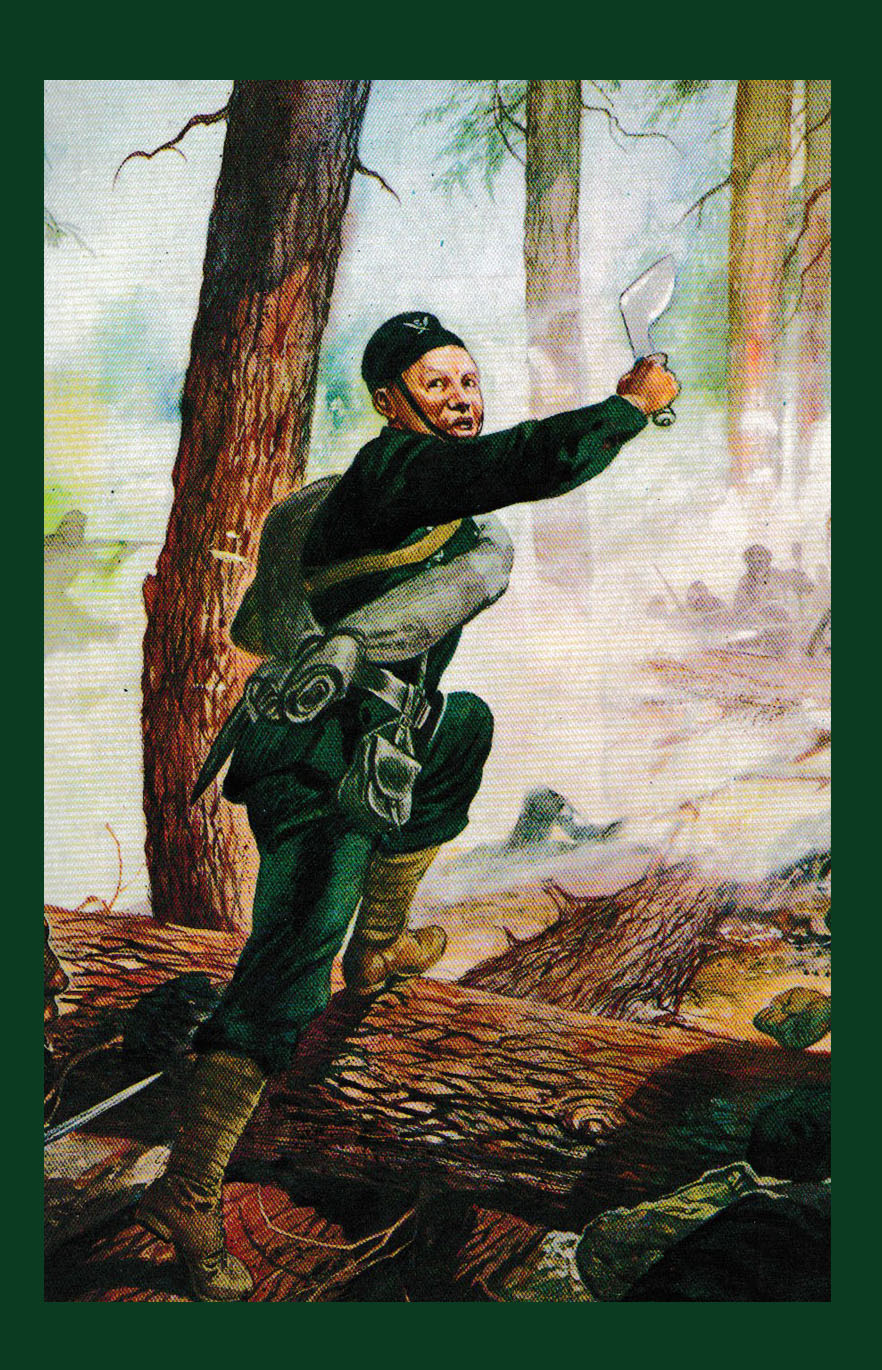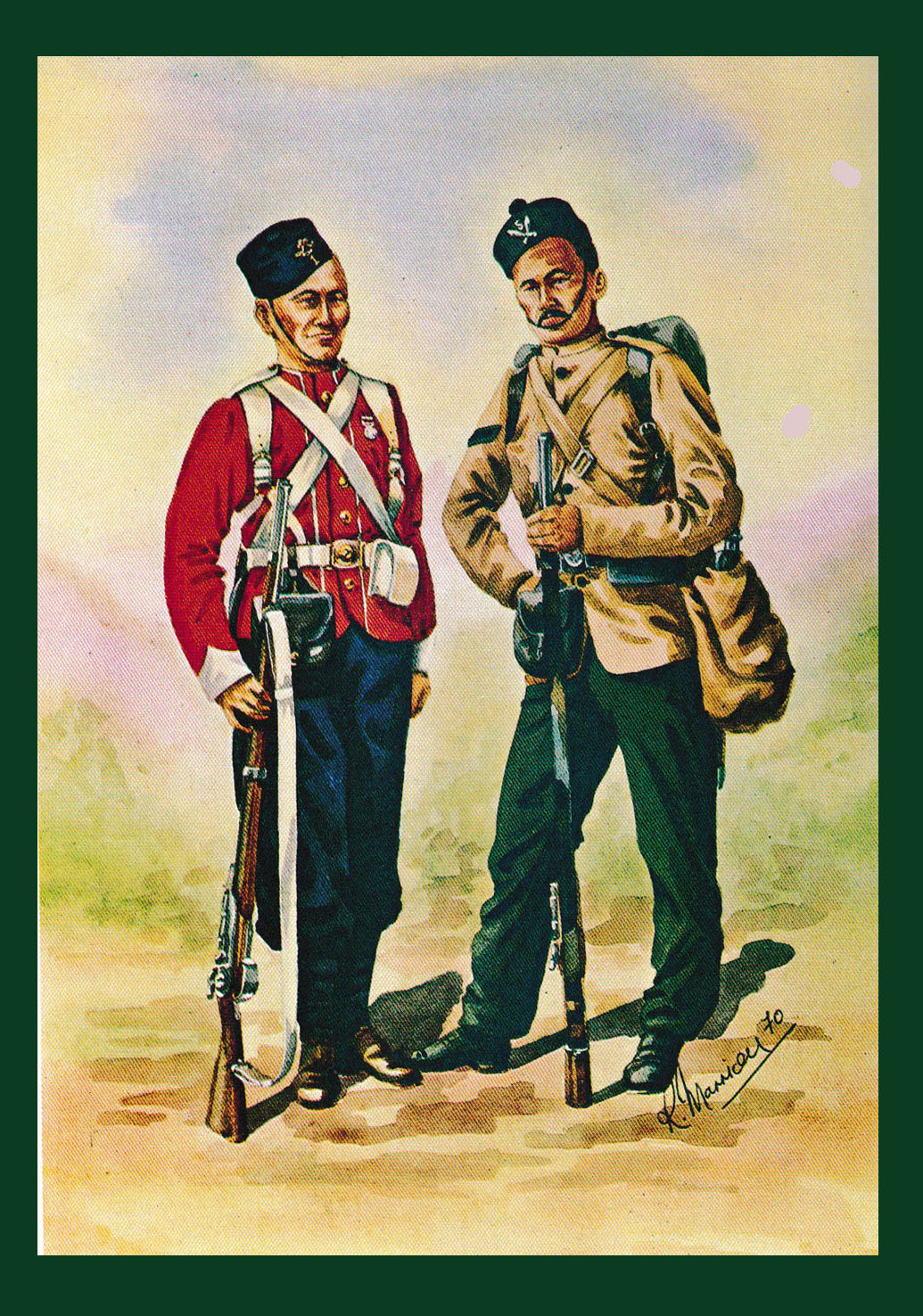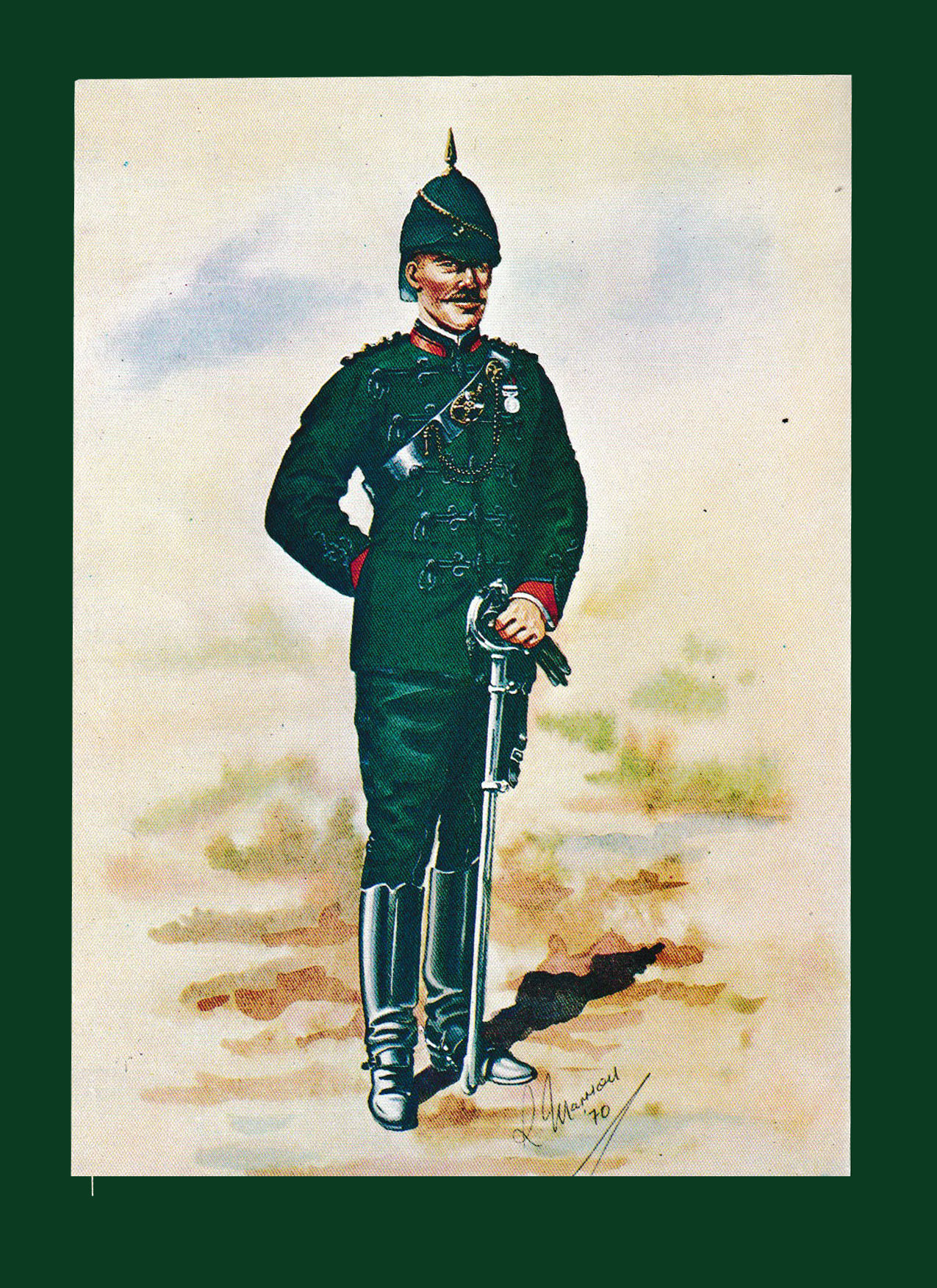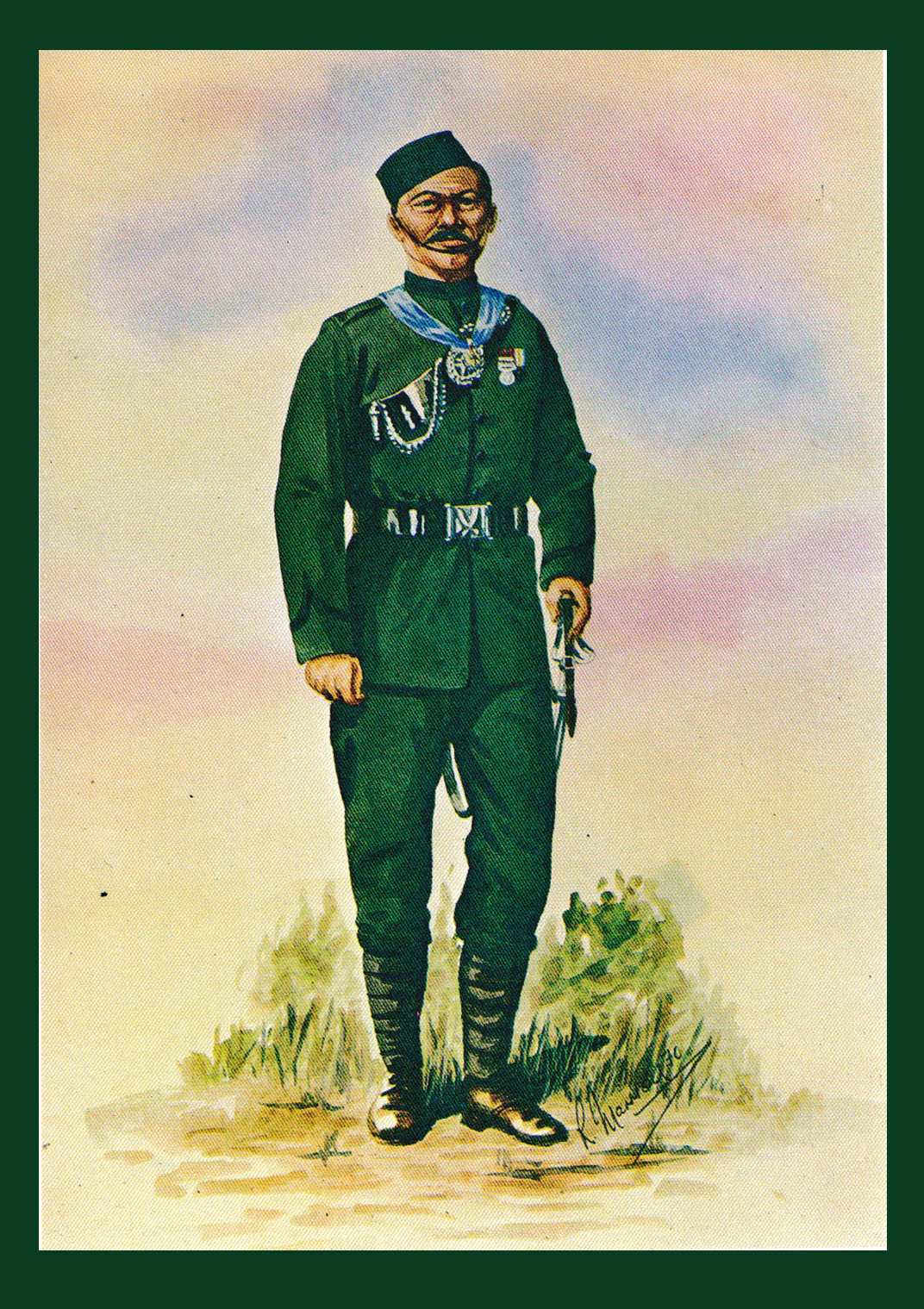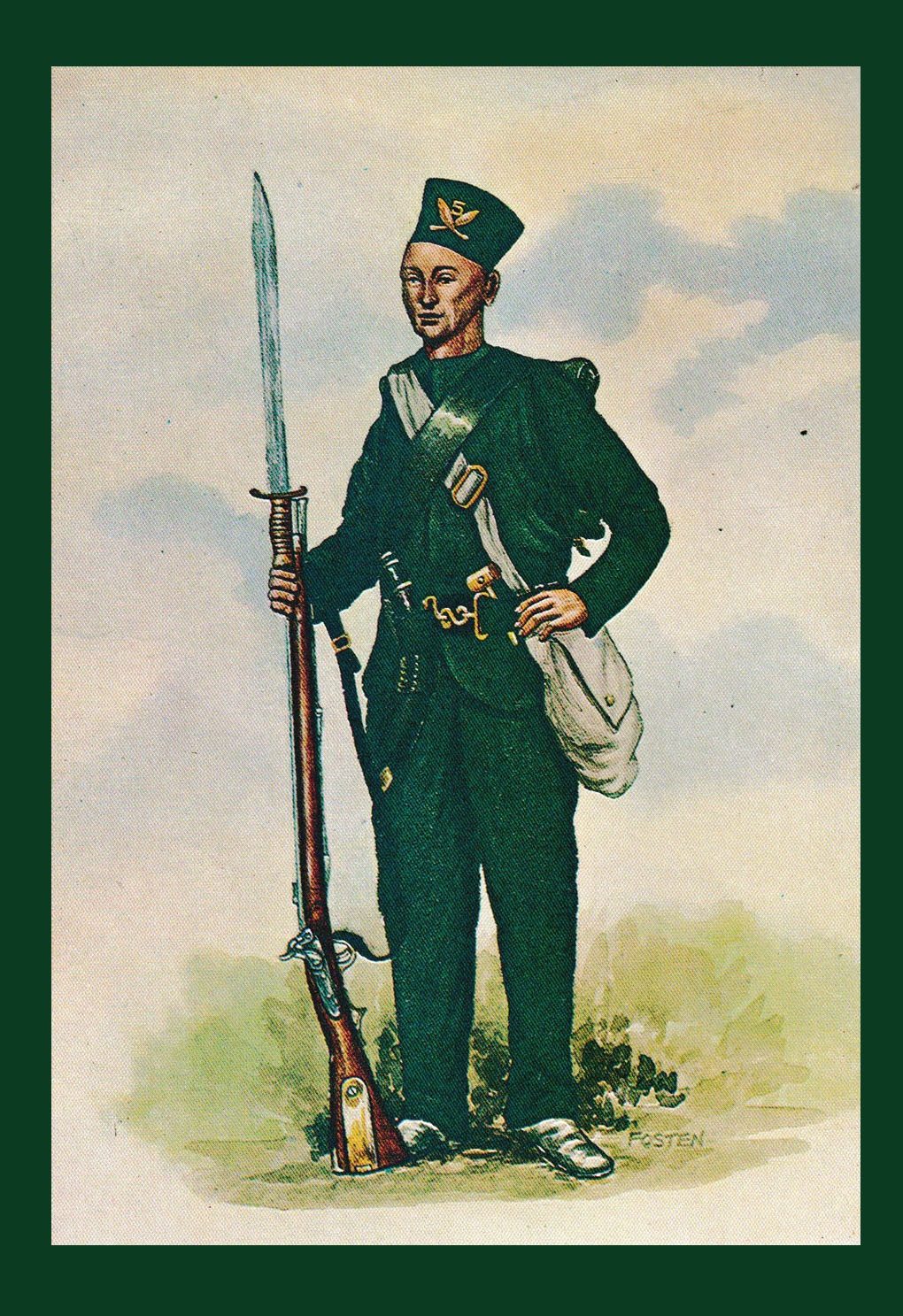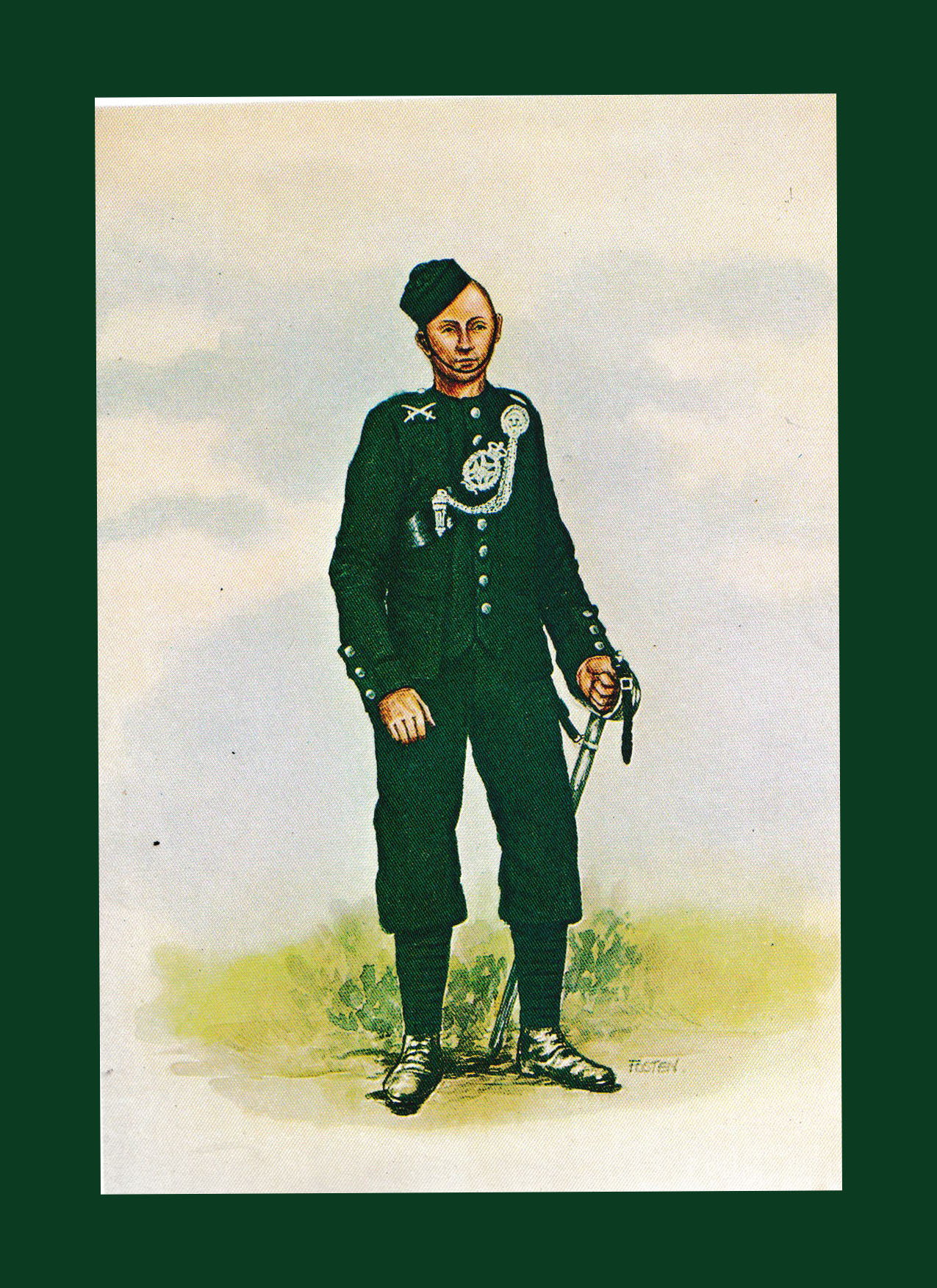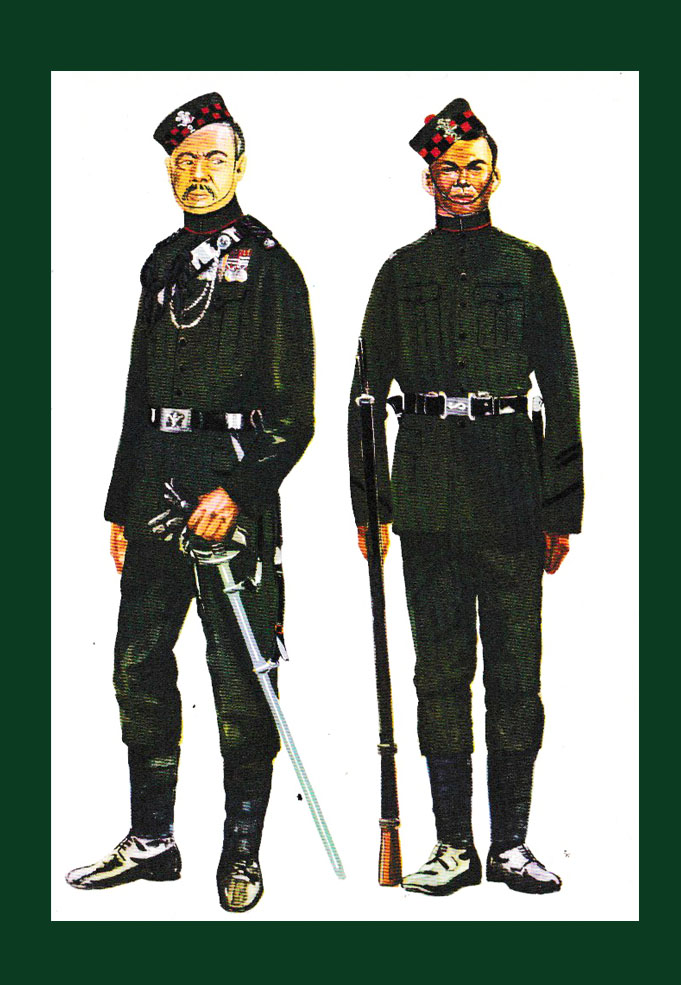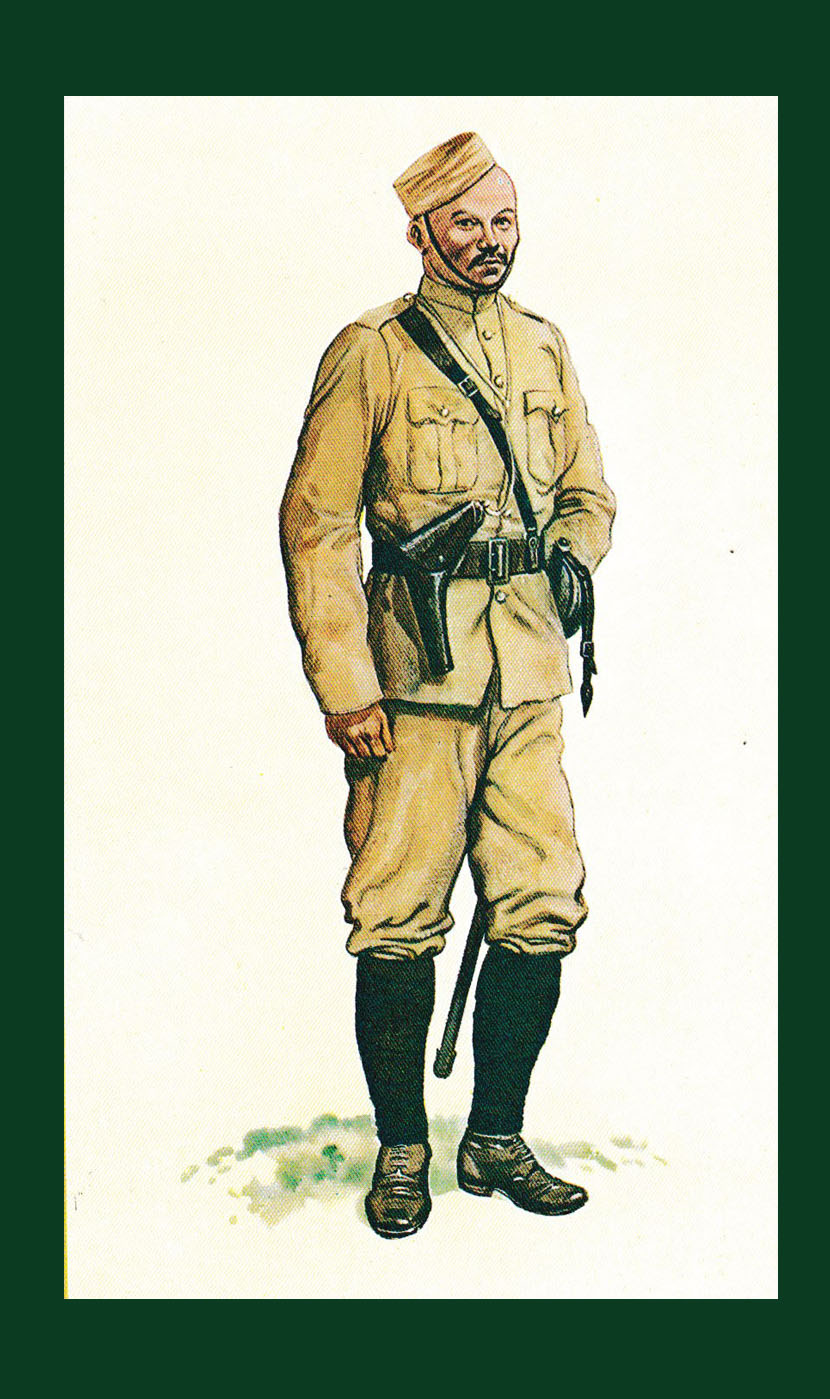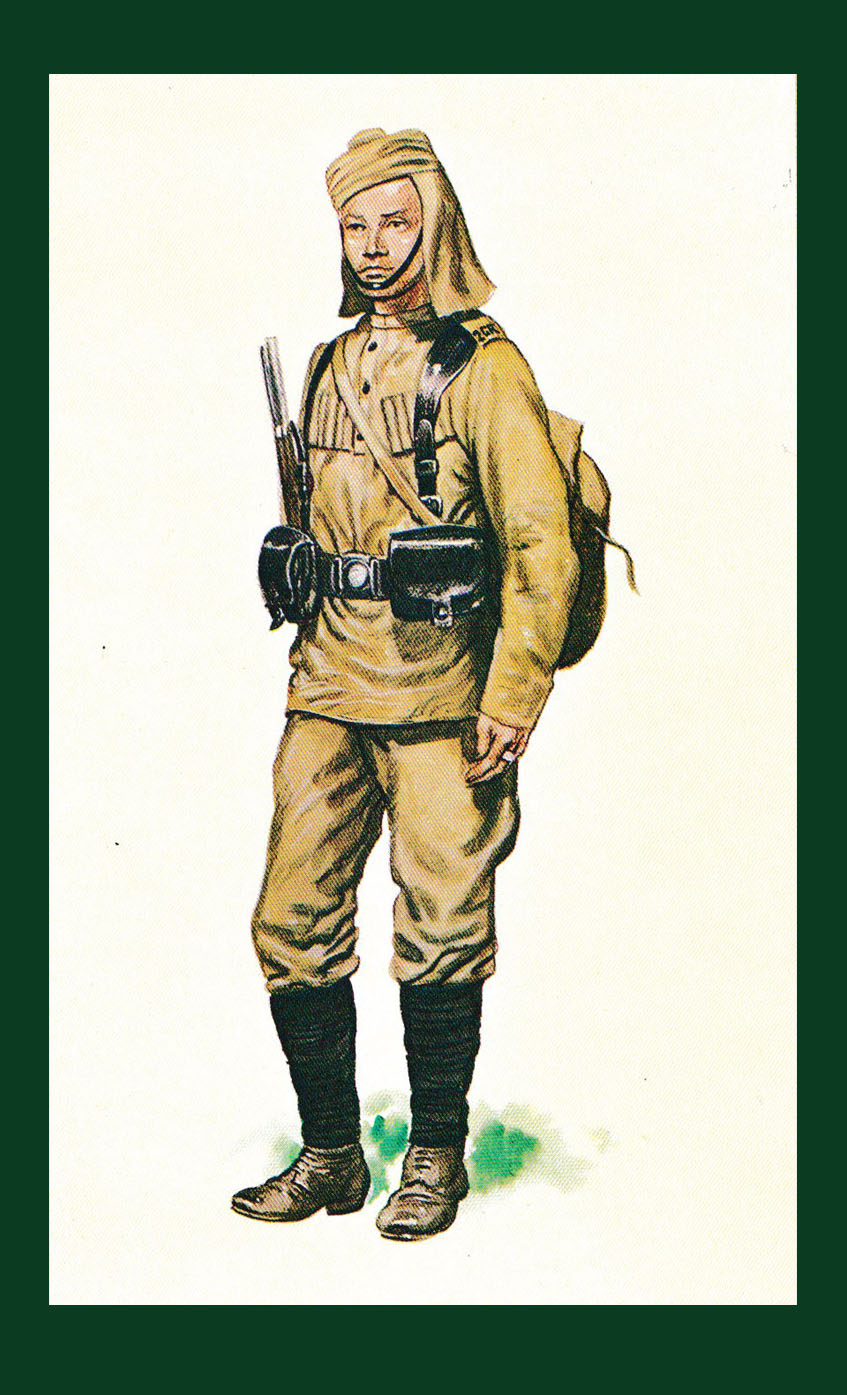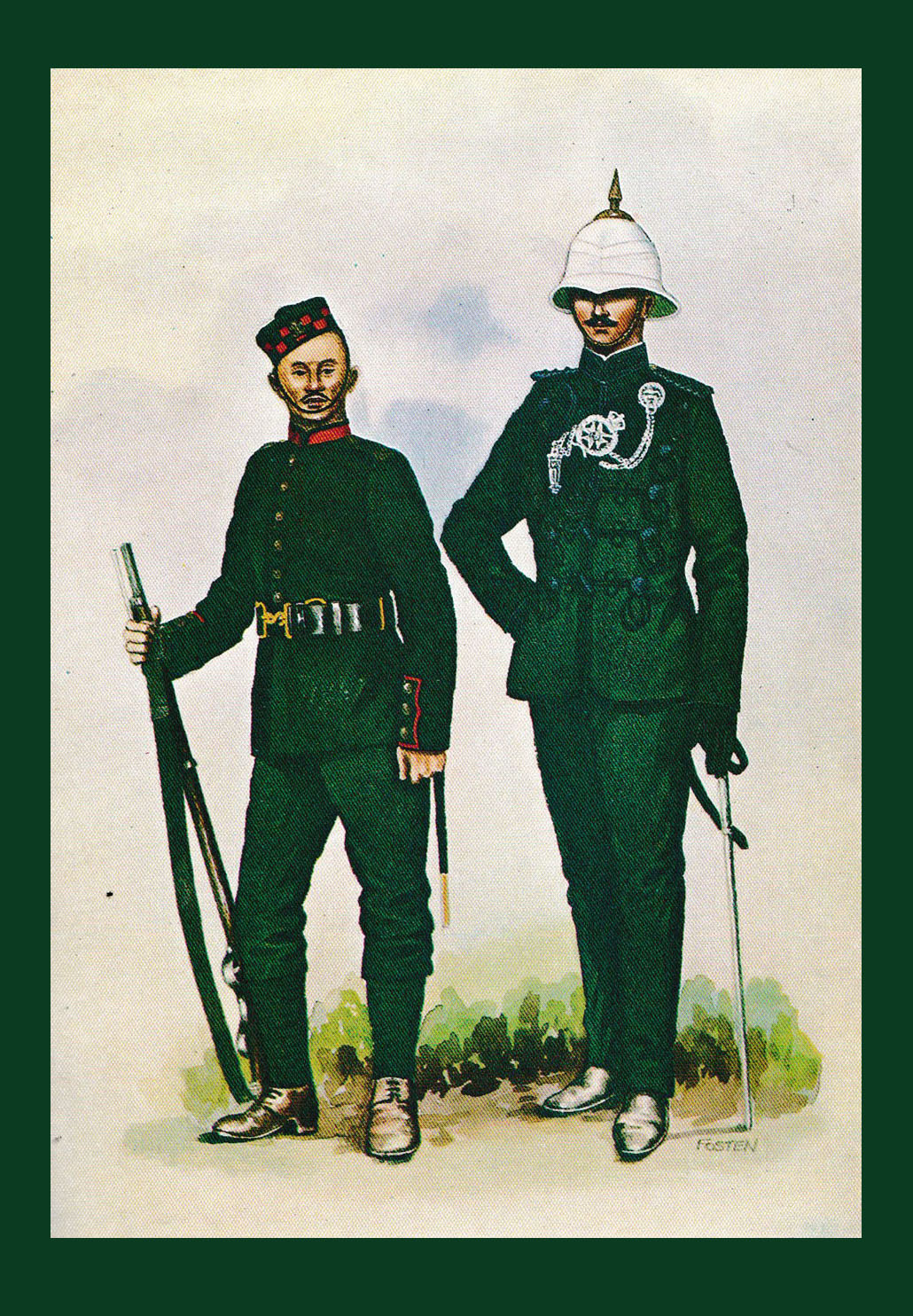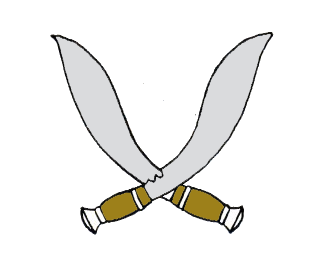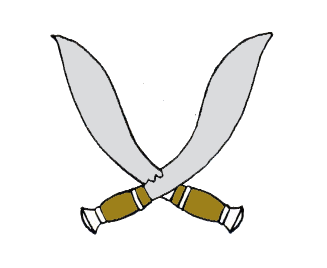THE GURKHA RIFLES
The Gurkhas are warrior natives from the Himalayan nation of Nepal, Situated between Tibet and India. The rough and rugged terrain makes Gurkhas inherently tough and resourceful.
They first encountered the British during during the Nepal War of 1814-15 which resulted from a local border dispute.
British officers were impressed by the fighting qualities of these tribesmen over the East India Company’s troops who struggled under old fashioned tactics. It wasn’t long before Gurkhas came down from the hills to offer their services to the Company.
From this time, the bond between British and Gurkha soldiers has been unbroken. Four Battalions of Gurkhas were formed in 1816 and absorbed into the Company’s Army.
They have fought in most of the wars that have involved Britain. Tribesmen on the north West Frontier feared Gurkhas. After the dissolution of the Honourable East India company, the Gurkhas remained in the Indian Army.
They served honourably in the first World War, where they distinguished themselves on the Western Front and Gallipoli.
In the second World War they continued their bravery at Dunkirk, the Western Desert, Italy and Burma.
In 1947, when India and Pakistan became independent nations, The 1st, 3rd, 4th, 6th, 8th and 9th regiments were transferred to the Indian Army. The 2nd, 5th, 7th and 10th became part of the British Army, officially on January 1st, 1948 and were designated as The Brigade of Gurkhas. Their full titles were:
2nd King Edward VII's Own Gurkha Rifles (The Sirmoor Rifles)
6th Queen Elizabeth's Own Gurkha Rifles
7th Duke of Edinburgh's Own Gurkha Rifles
10th Princess Mary's Own Gurkha Rifles
Other units raised:
The Gurkha Independent Parachute Company
The Gurkha Engineers
The Gurkha Signals
The Gurkha Transport Regiment.
By the end of the 20th century, the Gurkhas had served as follows:
Hong Kong
The Malayan Emergency 1952-1970
The Indonesian Confrontation in Borneo1963 to 1966
The Falklands War 1982
Peacekeeping in Sierra Leone, East Timor, Bosnia and Kosovo.
In 2021 The Brigade of Gurkhas was radically re-organised:-
1st Battalion, The Royal Gurkha Rifles (1RGR)
2nd Battalion, The Royal Gurkha Rifles (2RGR)
3rd Battalion, The Royal Gurkha Rifles (3RGR)
Gurkha Allied Rapid Reaction Corps Support Battalion
Queen's Gurkha Signals which includes:
250 Gurkha Signal Squadron, 30 Signal Regiment
246 Gurkha Signal Squadron, 2 Signal Regiment
247 Gurkha Signal Squadron, 16 Signal Regiment
248 Gurkha Signal Squadron, 22 Signal Regiment
249 Gurkha Signal Squadron, 3rd (UK) Division Signal Regiment
10 Queen's Own Gurkha Logistic Regiment RLC
Queen's Gurkha Engineers, which includes:
69th Gurkha Field Squadron, 36 Engineer Regiment
70th Gurkha Field Squadron, 36 Engineer Regiment
Gurkha Staff and Personnel Support Company
Band of the Brigade of Gurkhas
Gurkha Company (Sittang), Royal Military Academy Sandhurst
Gurkha Wing (Mandalay), Infantry Battle School
Gurkha Company (Tavoleto), Land Warfare Centre
Bravest of the Brave, most generous of the generous
Never had a country more faithful friends than you
By Sir Ralph Turner M.C.
Every Gurkha carries a fearsome weapon on his belt.
It is the Kukri, a curved blade, the use of which terrifies friend and foe
With acknowledgements to Tradition Magazine,
the late Bob Marrion and the late D.S.V. Fosten
5th Hazara Gurkhas at Peiwar Kotal
during the 2nd Afghan War 1878
By Gerry Embleton
The Gurkha Regiments
with date of raising
The 1st King George V's Own Gurkha Rifles (The Malaun Regt.) 1815
The 2nd King Edward VII's Own Gurkhas (The Sirmoor Rifles) 1815
The 3rd Queen Alexandras Own Gurkha Rifles 1816
The 5th Royal Gurkha Rifles (Frontier Force) 1858
The 6th Queen Elizabeth's Own Gurkha Rifles (Cuttack Legion) 1817
The 8th Gurkha Rifles 1824
The 9th Gurkha Rifles 1861
The 10th Princess Mary's Own Gurkha Rifles
5th Hazara
Gurkha Regt 1886
By Bob Marrion
1st Gurkha Regt 1880
By Bob Marrion
2nd Prince of Wales's Own Gurkha Rifles British Officer 1900
By Bob Marrion
44th (Sylhet) Bengal Infantry
Native Officer 1880
By D.S.V. Fosten
2nd Prince of Wales's Own
Gurkha Rifles (Sirmoor Rifles}
Rifleman 1895
By D.S.V. Fosten
7th Gurkha Rifles
British Officer 1913
By D.S.V. Fosten
2nd Prince of Wales's Own Gurkha Rifles (Sirmoor Rifles}
Native Officer & Rifleman 1895
By Jack Cassin Scott
2nd Prince of Wales's Own Gurkha Rifles (Sirmoor Rifles)
Rifleman in Service Dress 1889
By Gerry Embleton
5th (Hazara) Gurkhas
Sepoy
1865
By D.S.V. Fosten
5th (Hazara) Gurkhas
Native Officer Service Dress
2nd Afghan War 1878
By Gerry Embleton
7th Gurkha Rifles
Subadar Major
1907
By R.J. Marrion

